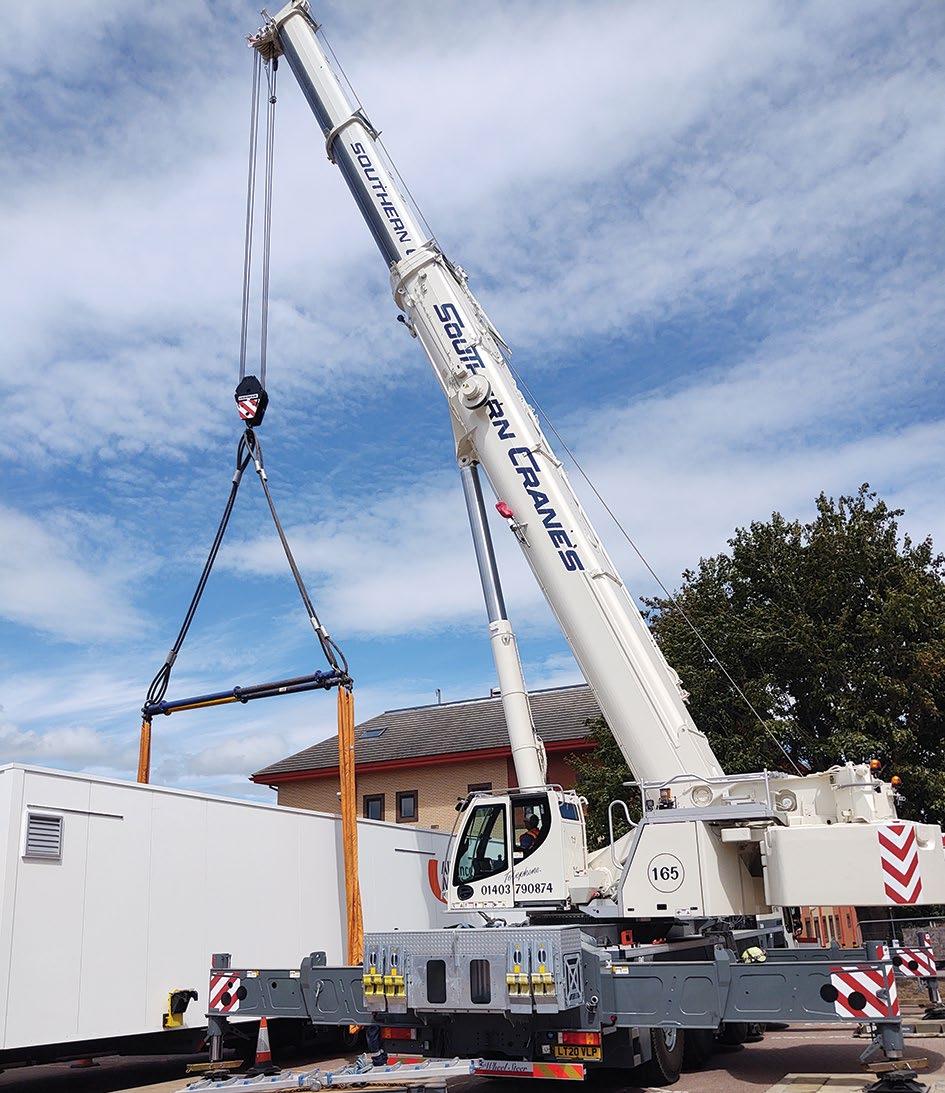
3 minute read
Hoists on the up
We covered mastclimbers and hoists in our March issue but given the level of material we had on mastclimbers we barely touched on hoists. This feature plans to readdress the balance a little. We look at what is or might drive uptake of both products, before focusing on a number of new hoists and product developments in what is a relatively mature and well developed sector. We will also take a look at some interesting projects and applications, including an update on the massive Battersea Power Station redevelopment site.
Growing demand
Every time we take a look at the mast climber market, we cannot but help comment on how slow the uptake has been across most western countries, there are a few exceptions, such as the Netherlands, Sweden and possibly Canada. This always causes us to scratch our heads, as the product has huge advantages over more traditional forms of access such as façade scaffold and tower stairs, and yet market penetration is still relatively low. However most of those who specialise in the sector that we spoke with confirm that demand has been very strong over the past few years and more importantly profitable.

Cladding has been stripped from some buildings but not always replaced
UK based international mast climber and hoist specialist Brogan even went so far as to say that it has seen a “huge uplift in demand for mast climbers, hoists and common towers over the past two years” and as a result has repeatedly stepped up its investment programme adding both new equipment and expanding its product range. The company must be doing something right as it is repeatedly listed among the 100 fastest growing independent UK exporters. In this year’s chart, published in February, Brogan was 65th - and although that was down from 31st in 2019, its export sales increased 60 percent to £12.6 million, while total revenues for the year to the end of 2018 were £34 million – in 2019 that jumped a further 40 percent to £48 million.

The Grenfell factor
It has been three and a half years since the Grenfell tower block fire in London left 72 people dead and a similar number seriously injured. The fire was caused by a flammable aluminium-polyethylene cladding system, which prompted the call for all such cladding to be removed from high rise buildings across the UK and replaced with a more appropriate fireproof cladding material. The ongoing investigations have already identified 470 high rise tower blocks that are clad with a similar type of material, while at least a further 170 - mostly privately owned - towers are expected to join the list to have their cladding removed and replaced.
Most publicly owned towers with the exact same material were quickly stripped of their cladding either using mast climbers or in some cases truck mounted lifts and on lower levels scissor lifts. Many tower blocks however have not yet had the replacement cladding installed. The lack of cladding is not only causing heat loss and a blot on the landscape, but also causing water ingress issues and dampness which if left will decay the structural fabric of the buildings.

Once the burning issue of who pays is settled, the massive replacement task should pick up speed with the potential to absorb a substantial percentage of the UK’s mast climber population. This is one application ideally suited to the mast climber, with alternative access methods really not coming close in terms of efficiency and overall project cost. The key to unlocking this demand is almost certainly political with members of parliament under growing pressure mounting from tenants in the affected buildings to provide a solution. Phase two of the Grenfell enquiry opened in January and continues to drag on, after being held up by the UK’s March Lockdown.










